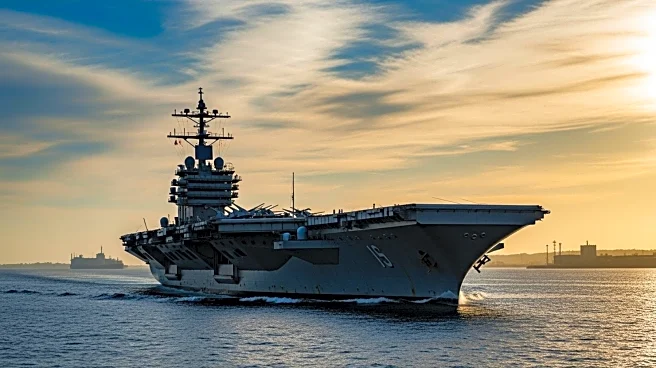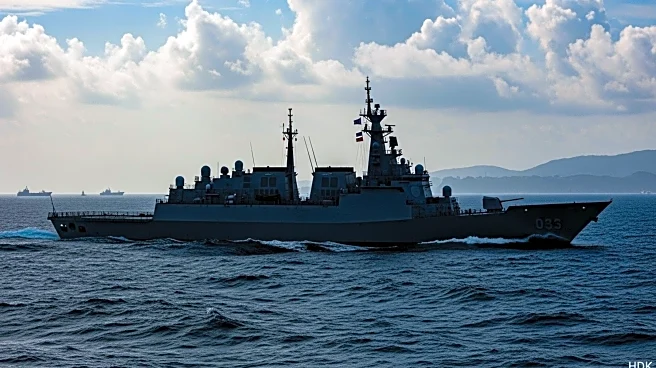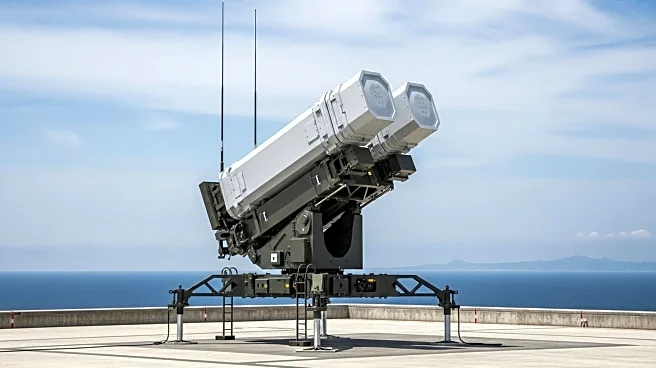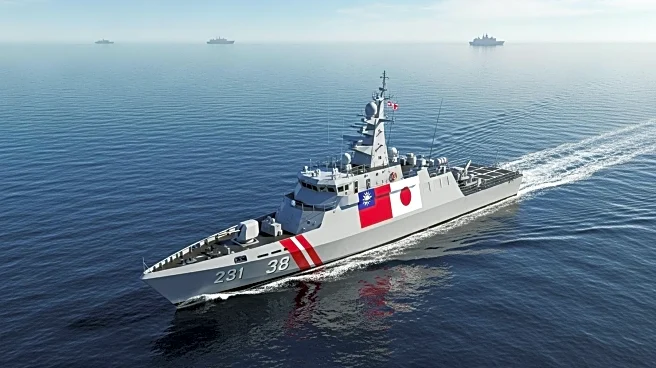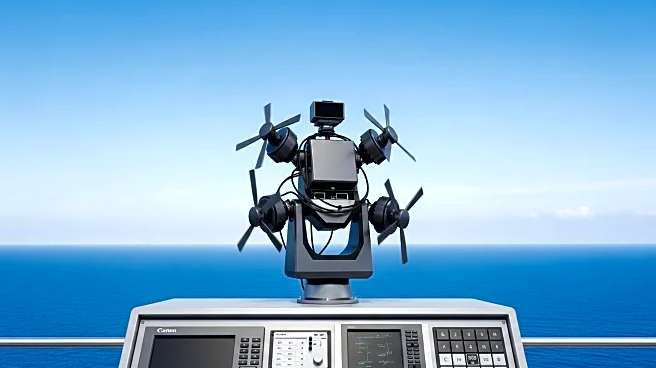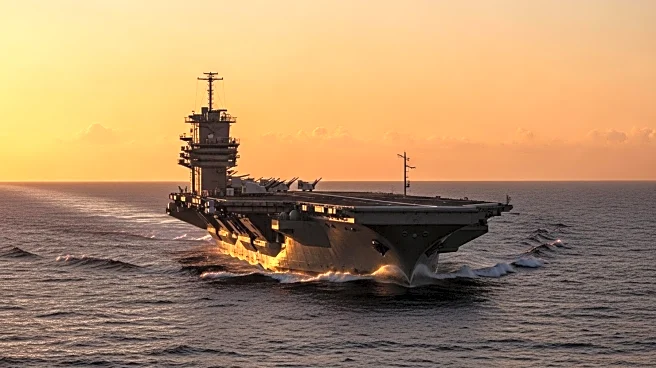What's Happening?
Satellite imagery has confirmed that two of China's aircraft carriers, CNS Shandong and CNS Fujian, have returned to their home port in Sanya, Hainan, after departing last week to avoid adverse weather conditions caused by Typhoon Matmo. The Fujian, which is undergoing testing and training, had previously transited through the Taiwan Strait. China claims dominion over most of the South China Sea, a region vital for global maritime trade, despite an international arbitral court dismissing Beijing's claims in 2016. The Yulin military complex on Hainan Island serves as a key naval hub for China, facilitating rapid deployment of naval and airpower.
Why It's Important?
China's military presence in the South China Sea is a strategic move to establish dominance in the Indo-Pacific region, challenging U.S. influence. The return of the carriers highlights China's operational readiness and its ability to evade natural threats like typhoons. The development of advanced carriers like the Fujian, equipped with electromagnetic catapult systems, signifies China's growing military capabilities, potentially altering the balance of power in the region. This situation affects neighboring countries with territorial claims and could lead to increased military tensions.
What's Next?
The commissioning of the Fujian by the end of the year remains uncertain. China is also constructing a fourth aircraft carrier, the Type 004, expected to be nuclear-powered and rival U.S. supercarriers. These advancements may prompt regional stakeholders, including the U.S., to reassess their military strategies and presence in the Indo-Pacific.
Beyond the Headlines
China's military expansion in the South China Sea raises ethical and legal questions regarding sovereignty and international maritime law. The ongoing territorial disputes could lead to long-term geopolitical shifts, affecting global trade routes and regional security dynamics.

